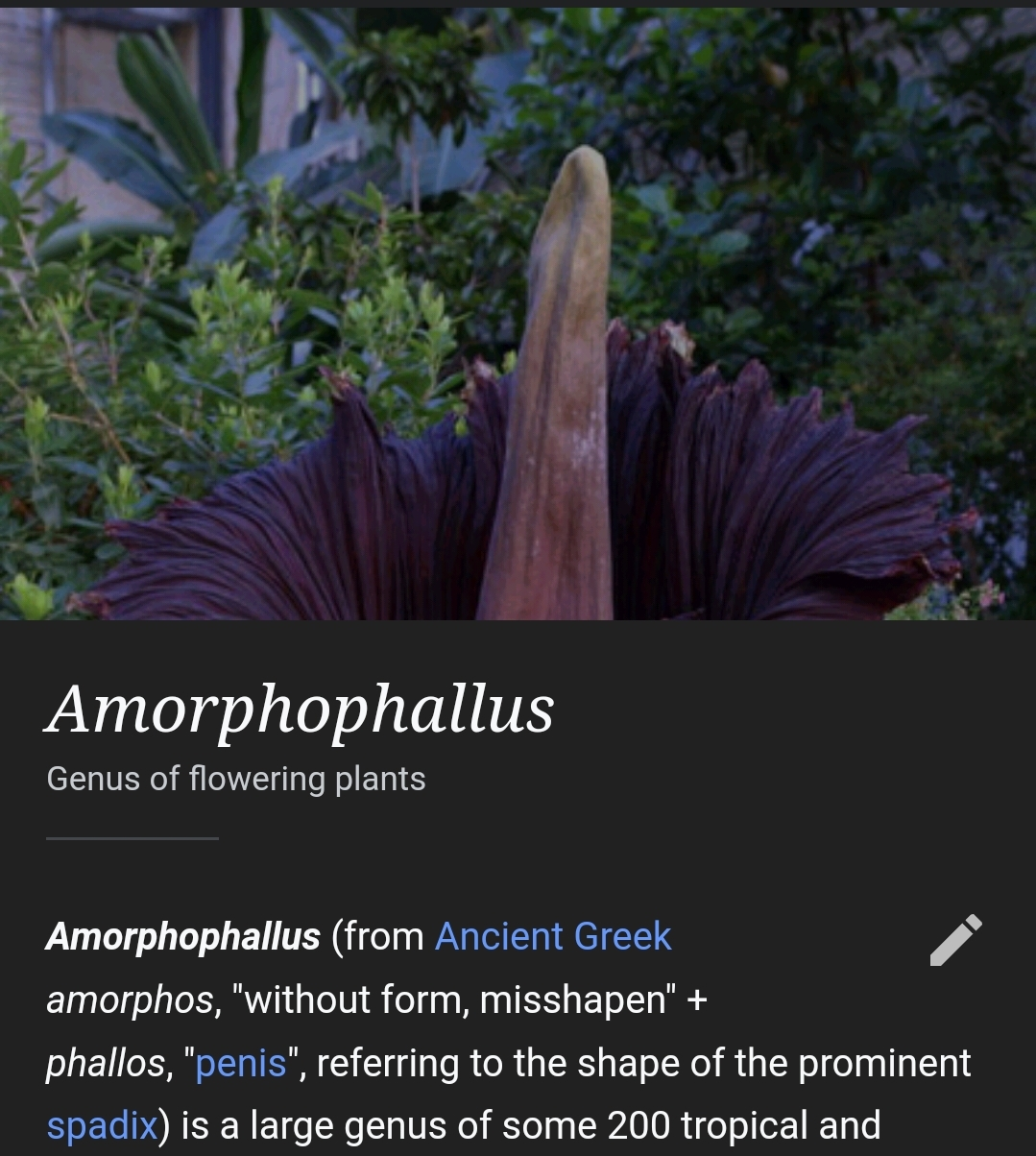TRUE AND REAL
NSFWDoes the genus name literally translate to “shapeless dick”?
God, I love scientists.
Edit: yeah, basically

“Lol weird dick 😂😂😂”
Memes aside, the plant heats up? Wtf how?
This got me interested too and apparently aroids as a family are specialized on doing this.
https://www.indefenseofplants.com/blog/2018/6/5/how-aroids-turn-up-the-heat
In lieu of their normal metabolic pathway, which ends in the production of ATP, the mitochondria switch over to a pathway called the “Alternative Oxidase Metabolic Pathway.” When this happens, the mitochondria start burning sugars using oxygen as a fuel source. This form of respiration produces heat.
Nonetheless, some aroids can maintain this costly level of respiration intermittently for weeks on end. Take the charismatic skunk cabbage (Symplocarpus foetidus) for example. Its spadix can reach temperatures of upwards of 45 °F (7 °C) on and and off for as long as two weeks. Even more incredible, the plant is able to do this despite freezing ambient temperatures, literally melting its way through layers of snow.
For some aroids, however, carbohydrates just don’t cut it. Species like the Brazilian Philodendron bipinnatifidum produce a staggering amount of floral heat and to do so requires a different fuel source - fat.
For about 20 to 40 minutes, the inflorescence of P. bipinnatifidum reaches temperatures as high as 95 °F (35 °C) with one record breaker maxing out at 115 °F (46 °C)!
Incredible!!
When this happens, the mitochondria start burning sugars using oxygen as a fuel source
That’s also (almost?) universal in human cancers
Isn’t this just the normal functions of mitochondria in organisms irrespective of kingdom? They burn sugars (in aerobic respiration using oxygen) to produce ATP. ATP can then be used elsewhere in the body as an energy reserve. Animals do it and plants do it. The difference here might rather be that they don’t convert the sugars into ATP but rather use the thermic energy of the reaction to produce heat instead of ATP?
ETA: unfortunately, searching for “Alternative Oxidase Metabolic Pathway” only leads to this very short Wikipedia article and a whole bunch of hard to understand scientific papers. But seems to be an alternative pathway found in various different organisms for various reasons.
Normal function is sugar to ATP, then the mitochondria use ATP. In humans it’s only broken ATP that uses sugar directly
Your first sentence is wrong (the mitochondria’s primary function is to generate ATP, which then gets transported to elsewhere where its stored energy is used). And your second sentence is confusing. With “broken ATP” you mean ADP? Or broken ATP synthesis? The point of this alternative oxidase pathway is producing some ATP, but inefficiently. And it produces also heat, because of its inefficiency (not all the energy stored in the sugars can be turned into chemically stored energy so it also produces heat energy. Think traditional light bulb). This heat is then used in the inflorescences of some aroids.
Yeah it’s outside my expertise so I’m bad at the detail.
Normal process is the nice efficient anaerobic process that produces ATP from glucose
Cancers use an all aerobic process which is less efficient but faster at producing ATP
You still got it mixed up a bit though. There is no “normal” respiration, cells use both types of respiration all the time.
Maybe you could link an article or a study where you’ve hear about this cancer connection? Would be curious what’s behind it.
Thanks! That’s crazy. Evolution has resulted in some weird shit
The hodler plant is in full bloom.
Amorpho what now
Satoshi Nakamoto is a plant!